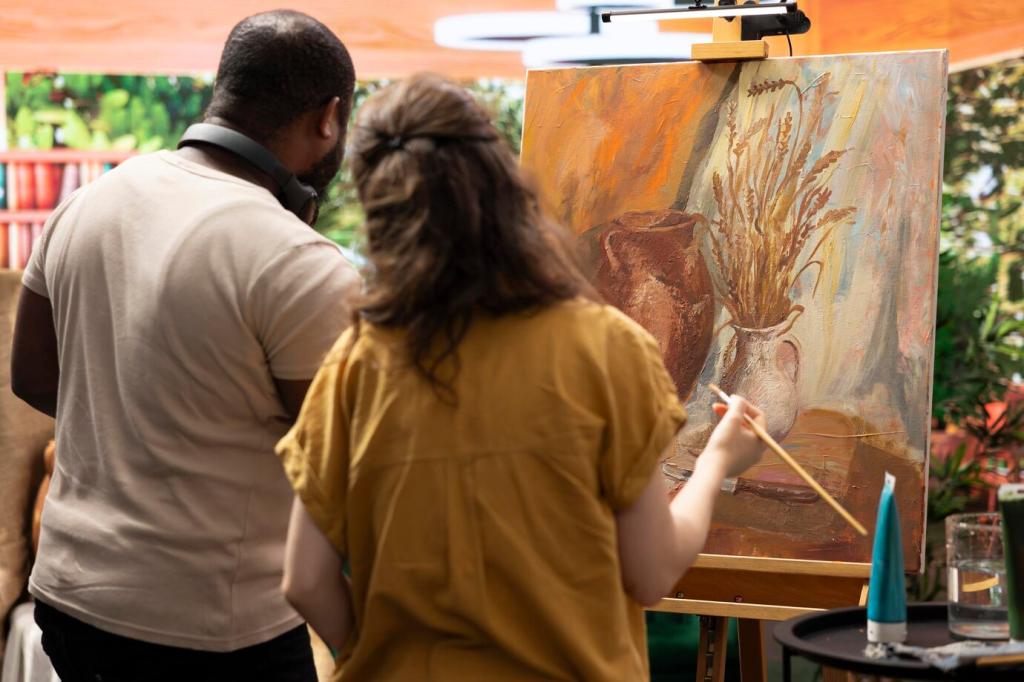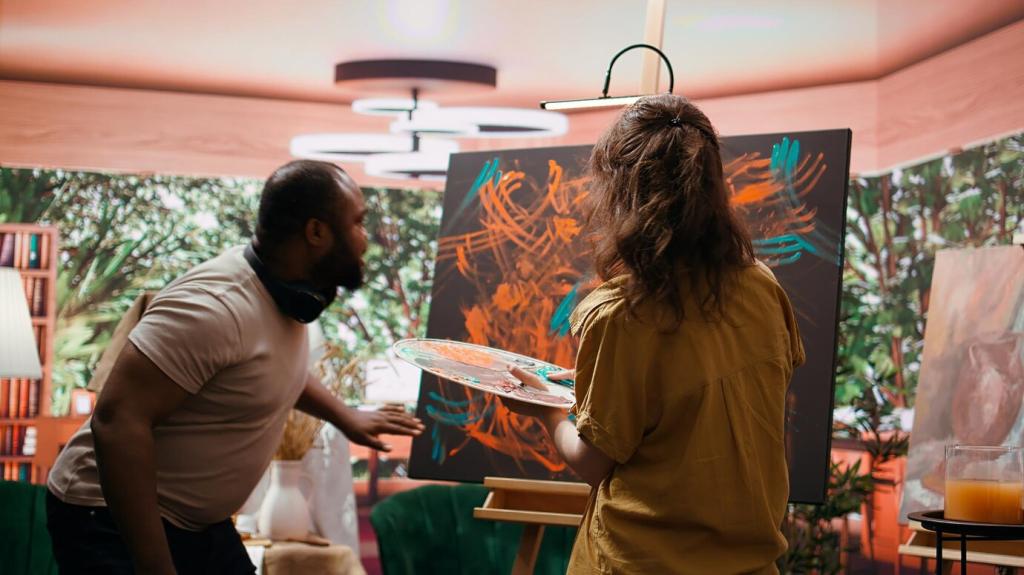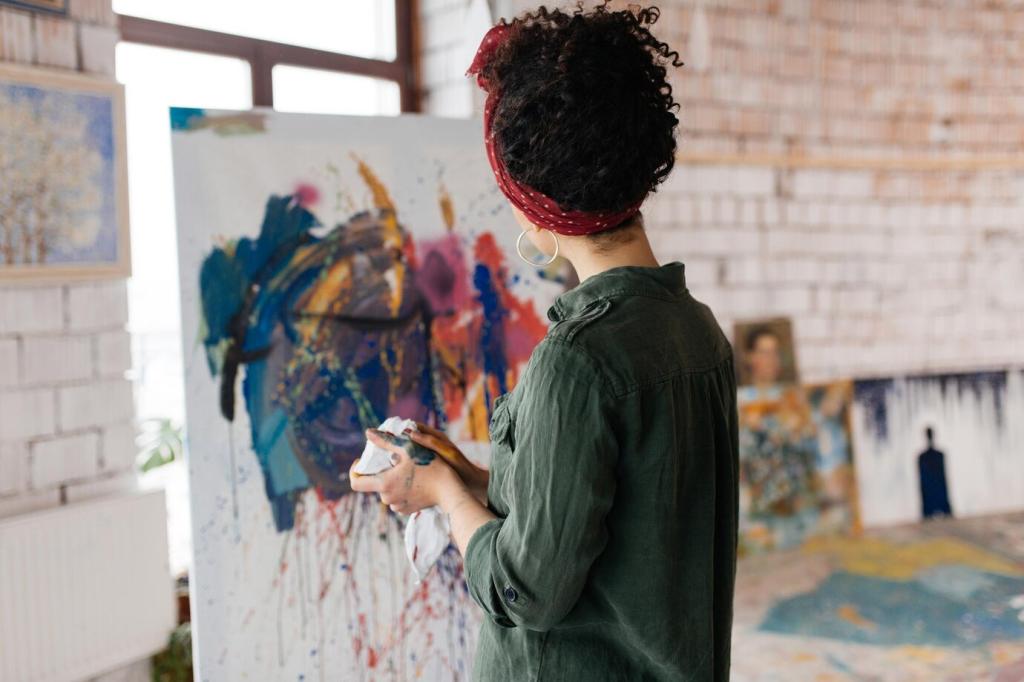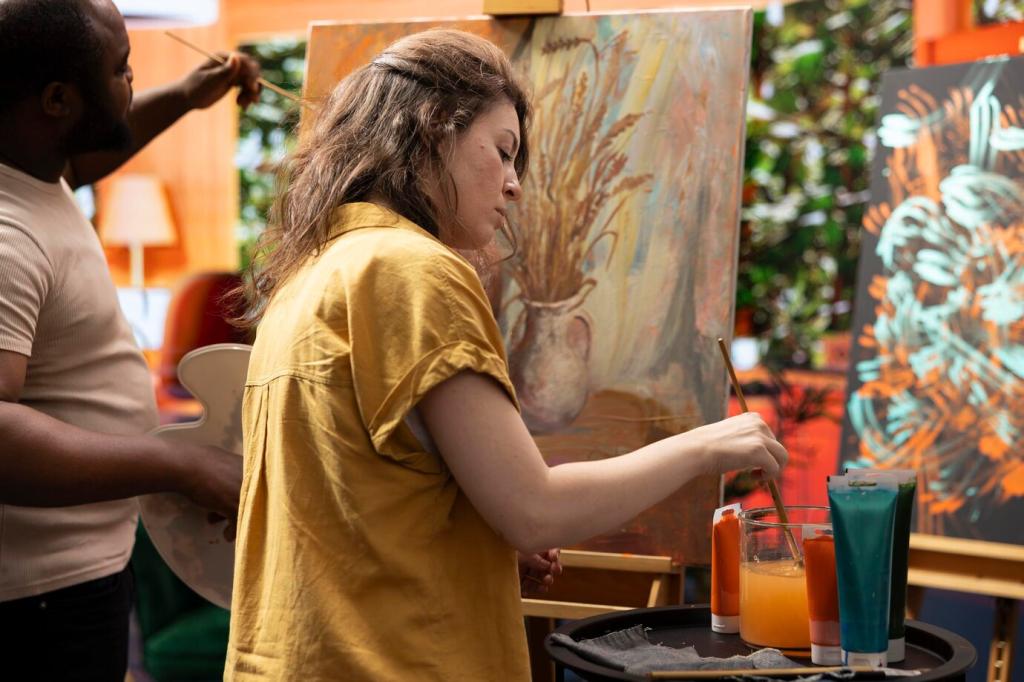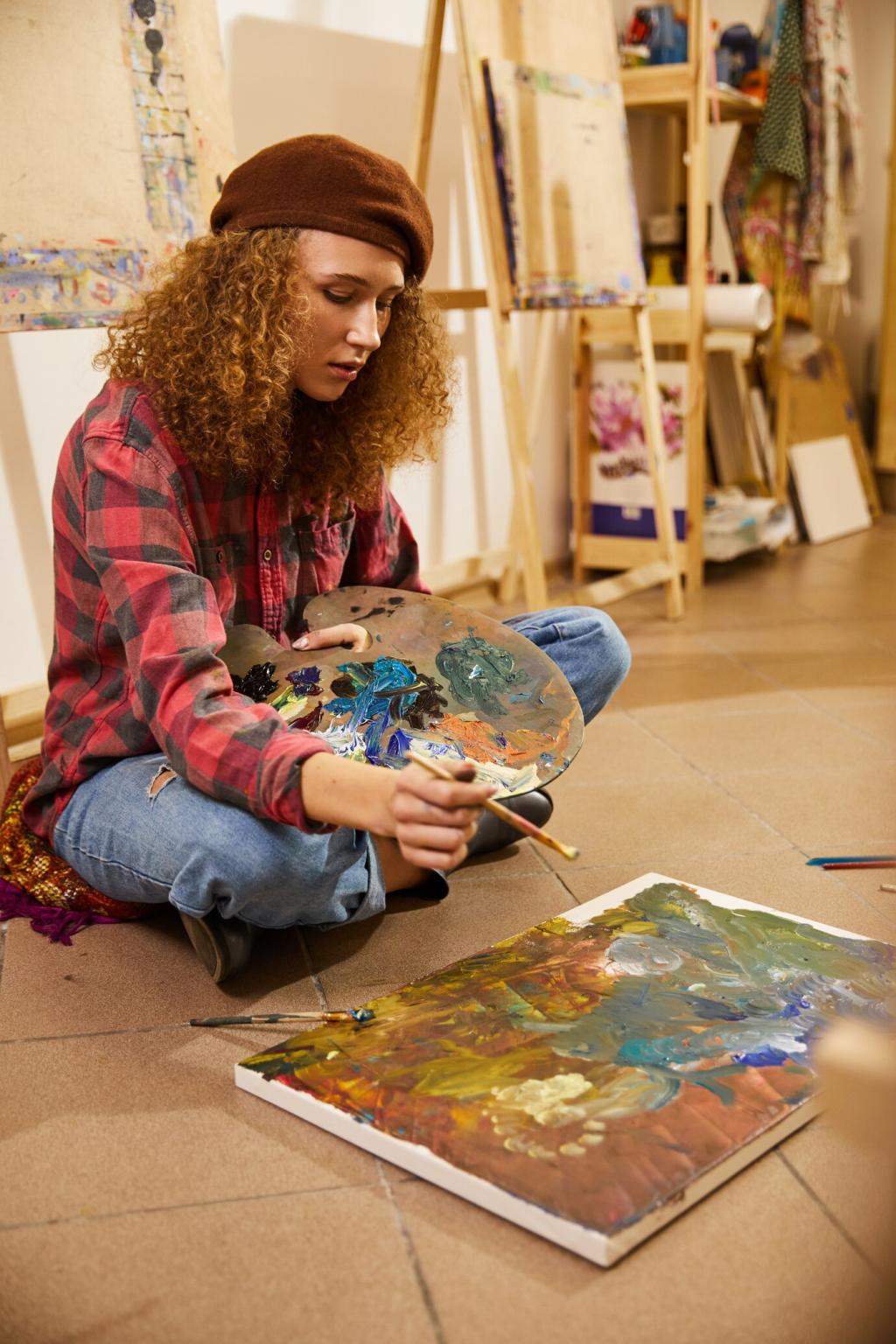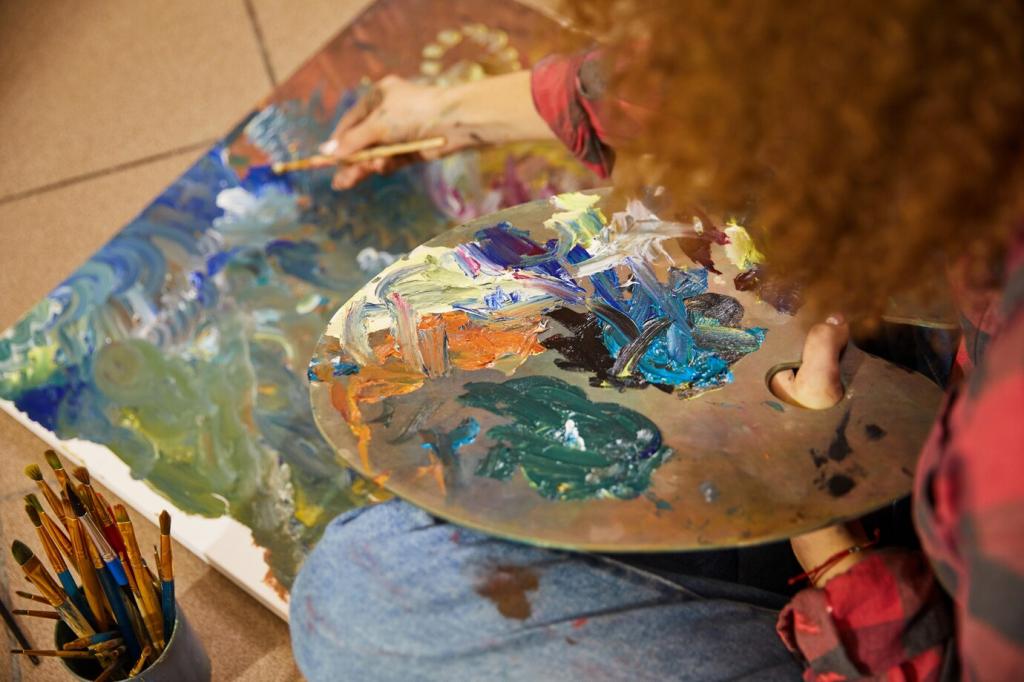Origins, Beliefs, and the Power of Symbol
A carved figure may represent a respected ancestor, consulted before planting or journeys. An elder once told me the smoothness of the wood should feel like the calm of a remembered voice, steadying hearts and guiding choices.
Origins, Beliefs, and the Power of Symbol
Artists choose iroko, ebony, raffia, or bronze for strength and symbolism. White kaolin signals spiritual purity; red ochre calls to vitality. Materials are never neutral—each fiber, metal, and pigment adds intention, memory, and protective meaning.

